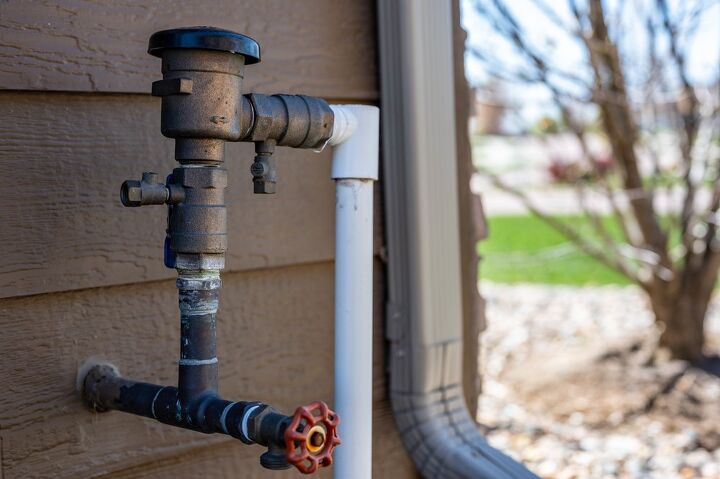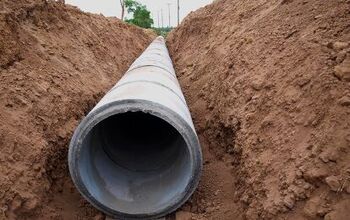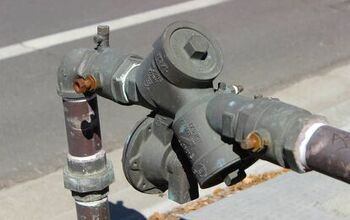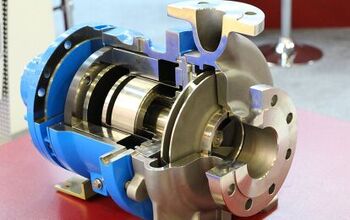Backflow Preventer Vs. Check Valve: What Are The Major Differences?

Modern-day plumbing is a wonderful benefit that many people around the world have become accustomed to. Access to clean and reliable drinking water is a beautiful privilege, mainly due to backflow prevention systems. Using various valves, like a check valve or a backflow preventer, can keep potentially contaminated water away from potable drinking water, keeping you and your family safe.
Both a backflow preventer and a check valve are commonly used and sometimes mandated on plumbing systems to prevent contaminated water from flowing backward through the pipes. With an operational and automatic backflow system, backflow preventers and check valves are ways to keep your drinking water safe. While the price is comparable between a backflow preventer and a check valve, installing a check valve yourself is possible. In contrast, a backflow preventer will need a professional to install the device.
Adding a backflow preventer or a check valve comes with a range of benefits that make this plumbing addition essential in many homes. Not only can backflow valves give you better-tasting drinking water, but they can help to keep your sensitive pumps and plumbing systems in working order, preventing damage from backflow. Plus, the addition of these valves can be economical and help save money by lowering the water pressure through your piping system.
Do You Need to Hire a Plumber?
Get free, zero-commitment quotes from pro contractors near you.

What Is a Backflow Preventer?
Technically speaking, a backflow preventer is a valve that works to prevent contaminated water from entering your main potable water supply. This valve works by preventing liquids from flowing in the opposite direction.
Backflow preventers are usually installed on apartments or residential homes to help keep drinking water sanitary. In some cases, a backflow preventer might also be required on a swimming pool or a sprinkler system.
What are the Benefits of a Backflow Preventer?
Aside from being a mandate in many parts of the country, there are some great benefits associated with a backflow preventer that can benefit the homeowner. Some top benefits of installing a backflow preventer on your plumbing system include:
- A backflow preventer is a terrific failsafe method to ensure your drinking water stays contaminant-free.
- Adding a backflow preventer is a way to stay healthy and eliminate the possible contamination of harmful chemicals or toxins.
- With the addition of a backflow preventer, it is possible to keep contaminants out of your plumbing system, which could allow your pipes to last longer.
- A backflow preventer gives you peace of mind knowing that you won’t have to worry about unhealthy drinking water or costly repairs caused by contaminants.
- In some areas, adding a backflow preventer means your home plumbing is compliant with local code.
Can I Install A Backflow Preventer Myself?
Unfortunately, even if you are a savvy homeowner familiar with plumbing, a backflow preventer must be installed by a licensed plumbing professional. The installation of a backflow preventer requires a permit to perform the work, and the plumber must integrate the new backflow preventer into your existing plumbing system.
How Long will a Backflow Preventer Last?
A backflow preventer is a reliable tool that many plumbing systems have to eliminate possible backwater from entering a potable water system. While a backflow preventer may last for years, these devices must be inspected, tested annually, and rebuilt every five years. A licensed plumber must do the work to inspect and rebuild a backflow preventer to ensure the work is done correctly.
What is a Check Valve?
Commonly used in plumbing operations, a check valve is a piece of plumbing equipment that only allows fluid to move in one direction. A check valve has two different points, with one used as the inlet and one used as the outlet. A check valve can also be referred to as a non-return valve or a one-way valve. These names are aptly applied to the valve because it only allows liquid to move one way through the plumbing system.
These valves use pressure differential to function. Higher pressure is required on the input side, and lower pressure is required on the output side to open the vale. If the pressure increases on the output side, the valve will close, preventing the liquid from moving backward or in the wrong direction. Compared to other valves, there is no physical operation to make these valves work. This feature is also what helps to make these valves so reliable.
How Is It Used?
Like a backflow preventer, a check valve can be used on various plumbing systems for residential homes and neighborhoods. These valves are cheap and effective, making them the preferred option for several different applications. These valves might be used for a sewer line or for a reverse osmosis filter in a home. Any application where fluid can only go one direction is a perfect area to install a check valve.
These valves come in several sizes and styles, making them well suited for just about every application. Their function is straight forward and many people will even use small check valves for hobbies and pets like maintaining a high-end aquarium.
What Are the Benefits of a Check Valve?
Compared to a backflow preventer, a check valve is a valuable piece of plumbing equipment that can be extremely beneficial. Some great benefits of using a check valve on your plumbing system include:
- A check valve can give an added layer of protection for compressor equipment and pumps that may be damaged from reverse flow or backflow.
- Adding a check valve can increase energy savings by dropping the pressure through the plumbing system.
- A check valve is an efficient method to prevent water hammer.
- If you are looking for a simple operation, adding check valves means less to break and lower maintenance costs.
- A versatile system with plenty of options makes check valves interchangeable with most plumbing systems.
Can I Install a Check Valve Myself?
For simple plumbing systems around your home that do not require a check valve to meet code, it may be possible to install yourself. To install a check valve, you will need to:
Step 1: Select the Valve
Always be sure to check the size you need before purchasing. The existing plumbing system where the check valve will be installed will determine the type of valve you will need to purchase. Be sure to pay close attention to how much water pressure will move through the system where the valve is installed.
Step 2: Inspection
Visually look inside the valve and confirm that the parts of the valve are clear and functioning before installation. You will want to ensure that the valve is free to move and does not intrude in any way.
Step 3: Place the Valve
Locate the area where you will want to place the check valve. Cut off the main water supply to the plumbing system. Carefully cut the area on the pipe where the valve will go. Make sure the edges on each side are appropriately lined up with the existing pipe. Cement into place with plumbing cement.
Step 4: Test
Restore the water to the plumbing system and test the valve to ensure it is functioning properly and not leaking at the junction site.
How Much Does a Backflow Preventer and Check Valve Cost?
Both a backflow preventer and a check valve have similar costs, but the check valve will run slightly less. Expect the backflow device to cost between $35 for small models and $600 for large and complex models. A licensed professional will have to install your backflow preventer, and labor costs can range from $100 to $400. Depending on your area, the total installation for a backflow preventer could cost upwards of $1000, but on average will be about $500.
Comparatively, a check valve may run slightly less depending on the size and model you select. The most basic check valve will run about $35, but even the top-of-the-line check valves will only cost $250. Installation from a professional plumber will be about the same, and the time required to install the valve will be similar to a backflow preventer with similar work required. Expect the total installation for your check valve to run about $350. It is possible to save some money and install a check valve yourself.
Do You Need to Hire a Plumber?
Get free, zero-commitment quotes from pro contractors near you.

Related Questions
Does plumbing code require special valve installation on plumbing fixtures?
Building and plumbing code at all levels, ranging from federal to local code, may require some backflow prevention systems for potable water. The type of backflow prevention can range from an automatic valve to a mechanical backflow preventer. Before installing a new backflow prevention system in your home, it is always best to consult with your local municipality or plumbing company to confirm what is required to meet the code in your area.
Are check valves reliable?
Check valves are commonly used in large residential buildings, like high-rise apartments and industrial power plants. The check valve has no moving parts, which makes this type of valve economical and extremely reliable. On average, a check valve will last about ten years, but it may be possible to get about 15 years of use from a check valve with the right care and maintenance.
Related Guide

We are a team of passionate homeowners, home improvement pros, and DIY enthusiasts who enjoy sharing home improvement, housekeeping, decorating, and more with other homeowners! Whether you're looking for a step-by-step guide on fixing an appliance or the cost of installing a fence, we've here to help.
More by Upgraded Home Team


























![Cost To Drill A Well [Pricing Per Foot & Cost By State]](https://cdn-fastly.upgradedhome.com/media/2023/07/31/9074980/cost-to-drill-a-well-pricing-per-foot-cost-by-state.jpg?size=350x220)
